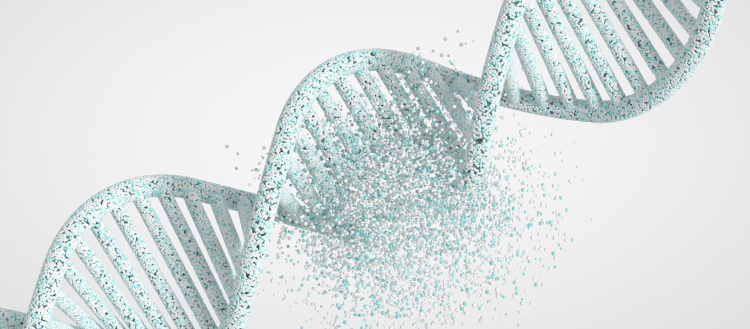A new rare genetic disease identified
An international research consortium, including researchers from the UNIGE Faculty of Medicine and from the University Children’s Hospital Zurich, has identified the origin of a serious new genetic disease. Previously unknown, this disease, caused by a mutation in the GNAI2 gene, has been discovered by sequencing the genome and complete exome of children with similar clinical manifestations, including developmental abnormalities and immune system disorders. In addition, a zinc ion-based treatment developed by the Geneva team for another genetic disease could also prove effective in this context. These results can be read in the journal Science.

Image: Istock.
G protein-coupled receptors (GPCRs) are a family of proteins located on the surface of cells. By transmitting signals across the cell membrane, they play a fundamental role in mammalian physiology. They form the largest class of receptors in humans and are the target of around 30% of all drugs currently on the market.
GPCRs act via heterotrimeric G proteins (Gαβγ), whose Gα subunits ensure receptor specificity and intracellular signal transduction. The 16 human Gα subunits are grouped into four families (Gαs, Gαi/o, Gαq/11 and Gα12/13) with distinct expression profiles and signalling partners. In humans, mutations in the genes encoding Gαi/o family proteins (GNAI1, GNAI3, GNAO1, GNAT1, GNAT2) can cause severe neurodevelopmental, craniofacial or visual system abnormalities. While the Gαi2 protein, encoded by the GNAI2 gene, is involved in the functioning of the cardiovascular, nervous, endocrine and immune systems, the consequences of a mutation in GNAI2 remain poorly understood.
Mutations causing serious malformations and immune disorders
Vladimir Katanaev, a professor in the Department of Cell Physiology and Metabolism in the Faculty of Medicine at the UNIGE, and his team have worked extensively on the molecular mechanisms of pathogenic mutations in GNAO1, a gene in the same family as GNAI2. He therefore joined a research consortium led by the US National Institutes of Health (NIH) and involving a hundred researchers around the world, with the aim of gaining a better understanding of the developmental consequences of GNAI2 mutations.
‘We sequenced the exome and whole genome of people suffering from a similar clinical picture in order to search for a potential common genetic cause’, explains Vladimir Katanaev. ‘And we found 20 patients from 18 unrelated families around the world with rare heterozygous variants of the GNAI2 gene that had never been reported before.”
“One of these patients is treated in our hospital in Zürich”, adds Prof. Jana Pachlopnik Schmid. "Our team at the University Children’s Hospital Zurich played an important role in identifying the clinical manifestations of this disease, particularly the immune system abnormalities. Our focus is on discovering novel inborn errors of immunity, and this case highlights how GNAI2 mutations can lead to profound immune dysfunction. In this patient, we observed a severe and widespread fungal infection, alongside several episodes of pronounced inflammation, as well as neuroanatomical abnormalities (including a hypoplastic pituitary gland) and severe scoliosis.”
These findings offer critical insights into the immune dysregulation of this novel disorder and contribute to our broader efforts to unravel the molecular mechanisms of rare immune diseases and develop targeted therapies. Carriers of these Gαi2 mutations presented serious clinical pictures, including developmental abnormalities - growth retardation, dysmorphism, neuroanatomical abnormalities, etc. Patients also suffer from other symptoms such as delayed neurological development, neurobehavioural deficits and gastrointestinal dysfunction. Almost all patients also had immune system involvement, characterised by recurrent, unusual and/or severe infections and inflammatory or autoimmune complications.
Mechanisms similar to GNAO1
“The same mutations that cause abnormal functioning of Gα in GNAO1 patients, leading to severe paediatric encephalopathy, cause immune cell dysfunction and developmental abnormalities in Gαi2,” notes Vladimir Katanaev. At a molecular level, pathogenic variants of Gαi2 - as in the case of Gαo - act on guanine nucleotides, one of the four basic components of RNA. The mutant proteins bind GTP much more quickly and hydrolyse it much more slowly than they should, making the mutant proteins constitutively bound to GTP and preventing normal embryo development.
The similarities between the GNAO1 (Gαo) and GNAI2 (Gαi2) mutations, even though they manifest themselves differently depending on the organs where the Gα subunits are expressed (the brain for Gαo and the immune system for Gαi2), suggest that identical molecular and cellular mechanisms underlie these disorders. “These results may suggest that the zinc ion-based treatment we have developed for GNAO1 encephalopathy could also prove effective for people suffering from this new Gαi2-related disease,” says Vladimir Katanaev.
“We are closely following the promising results of the zinc ion-based treatment for GNAO1 encephalopathy,” says Jana Pachlopnik Schmid. “While it is too early to administer this treatment to our patient with GNAI2-related disease, we are carefully exploring its potential for addressing the immune dysfunction and developmental abnormalities caused by GNAI2 mutations. This case may contribute to a broader international effort aimed at investigating treatment options for this rare disorder and exploring possibilities for targeted therapies.”
24 Sept 2024